Dear Artist,
When Joan Didion was little, she wanted to be an actress. One day when she was upset about something, her mother told her to write down her feelings. When she was 15, as a way of figuring out how his sentences worked, Joan went to her room and typed stories by Ernest Hemingway. By doing so, she also taught herself how to type. Later, she would describe his sentences as perfect; “smooth rivers, clear water over granite, no sinkholes.”
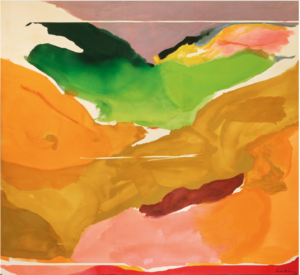
Nature Abhors a Vacuum, 1973
Acrylic on canvas
103 1/2 x 112 inches
by Helen Frankenthaler (1928 – 2011)
Joan was shy and bookish, and thought that acting might help her with social anxiety. Suffering from nosebleeds, she spent a summer on her front porch in Sacramento reading Eugene O’Neill plays. “Being left alone and leaving others alone,” she said, “[was]regarded by members of my family as the highest form of human endeavor.” In 1956 she graduated from Berkeley with an English degree. She’d just won an essay contest sponsored by Vogue. She skipped the prize of a trip to Paris and went straight to New York to work as a research assistant for the magazine.
Joan said it was at Vogue where she learned how to construct perfect sentences. She wrote captions and commercial copy, then became an associate feature editor. At night, over several years, she worked on scenes for a novel. When she finished a scene, she’d pin it to a long strip of pages on the wall of her apartment. Later she could pick one, pull it off the wall and rewrite it. When she had 150 pages, Joan showed them to 12 publishers, all of whom passed. “The thirteenth…gave me an advance, and with that thousand dollars or whatever it was I took a two-month leave of absence and wrote the last half of the book. That’s why the last half is better than the first half.”
Joan realized that being an actress and being a writer were essentially the same impulse: a kind of make-believe, but as a writer, she could do it all alone. She was struck when a friend who was an actress came to dinner. The other guests were writers. “It suddenly occurred to me that she was the only person in the room who couldn’t plan what she was going to do,” said Joan. “She had to wait for someone to ask her, which is a strange way to live.”
Sincerely,
Sara
PS: “I start a book and I want to make it perfect, want it to turn every color, want it to be the world. Ten pages in, I’ve already blown it, limited it, made it less, marred it. That’s very discouraging. I hate the book at that point. After a while I arrive at an accommodation: Well, it’s not the ideal, it’s not the perfect object I wanted to make, but maybe — if I go ahead and finish it anyway — I can get it right next time. Maybe I can have another chance.” (Joan Didion (1934 – 2021))
Esoterica: “Toward the beginning of a novel I’ll write a lot of sections that lead me nowhere. So I’ll abandon them, pin them on a board with the idea of picking them up later,” said Joan. Her process remained similar throughout her writing life: novels, screenplays, new journalism, essays, memoirs. She began her workday by retyping pages written the day before, with notes made the previous evening, with a drink, for an hour before dinner. “I can’t do it late in the afternoon because I’m too close to it.” she said. “Also, the drink helps. It removes me from the pages.” She spent the hour taking things out and putting other things in. Retyping the pages helped her to get into the rhythm of work, to prime the pump for the day’s ideas to flow. It continued, perhaps, as a kind of muscle memory from her early days with Hemingway – making the motions of being a writer in order to become one – or reminding her of who she already was. During these periods, Joan rejected a social life. “I don’t like to go out or have anybody to dinner, because then I lose the hour,” she said. “If I don’t have the hour, and start the next day with just some bad pages and nowhere to go, I’m in low spirits.” Lastly, at least when she was still raising her daughter, when nearing the end of a book, Joan would return to her parents’ house in Sacramento. She wanted to sleep in the same room with her story and characters. “Somehow the book doesn’t leave you when you’re asleep right next to it,” she said. “In Sacramento nobody cares if I appear or not. I can just get up and start typing.” Joan Didion passed away from complications of Parkinson’s Disease in her home in Manhattan on December 23, 2021. She was 87.
Joan Didion’s 1978 seminal interview on the mechanics of writing, The Art of Fiction, for The Paris Review, is here.
“There’s a point when you go with what you’ve got. Or you don’t go.” (Joan Didion)
Have you considered a Premium Artist Listing? With each letter, an artist is featured at the bottom of this page. The Premium Artist Listings are a means of connecting artist subscribers through their work. Proceeds from each listing contribute to the production of The Painter’s Keys.
“Novels are like paintings, specifically watercolors. Every stroke you put down you have to go with. Of course you can rewrite, but the original strokes are still there in the texture of the thing.” (Joan Didion)
Featured Workshop
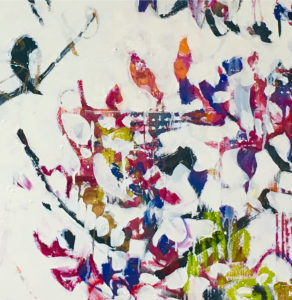 Join Ellie Harold for “Intuitive Painting: Permission to Paint Expressively,” designed especially for mature women artists of all skill levels who wish to explore this medium for soulful exploration. The retreat provides attractive accommodations (your own room!) along with lightly structured activities for centering, relaxation and low stress art-making. You’ll have plenty of free time to muse, paint, write and reflect while enjoying the colors, textures and flavors of San Miguel. This Retreat has the potential to transform not only your art but your life! You’ll return home with a specific art “care plan” to assure support for further creating. Details at www.EllieHarold.com.
Join Ellie Harold for “Intuitive Painting: Permission to Paint Expressively,” designed especially for mature women artists of all skill levels who wish to explore this medium for soulful exploration. The retreat provides attractive accommodations (your own room!) along with lightly structured activities for centering, relaxation and low stress art-making. You’ll have plenty of free time to muse, paint, write and reflect while enjoying the colors, textures and flavors of San Miguel. This Retreat has the potential to transform not only your art but your life! You’ll return home with a specific art “care plan” to assure support for further creating. Details at www.EllieHarold.com.
Featured Artist
We live in a fractured world. Wars, famine and power games are forcing people to abandon their homes and their way of life in hopes of finding peace. For lack of education or specialized skills, the poor are not accepted into our northern communities. They stay in the camps on the borders of turmoil, separated from local community. Animals are caught in the crossfire. Even the trees and the rocks suffer the agony of imbalance. This chaos is evident in my work. In between the rivulets of paint and the textural accidents I choose colours and forms to suggest a landscape where beauty continues to reign. We can still change the tide and build a new world harmony. Certainly, contemporary will focuses on gold instead of beauty. Yet, beauty is essential to the wellbeing of the planet. She is essential to the survival of humanity.

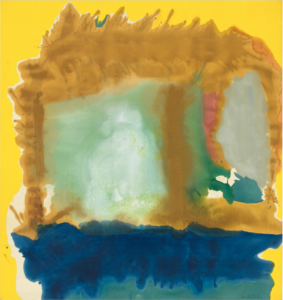
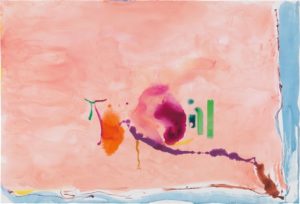
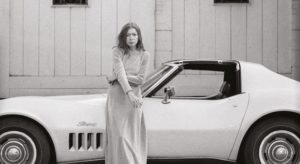
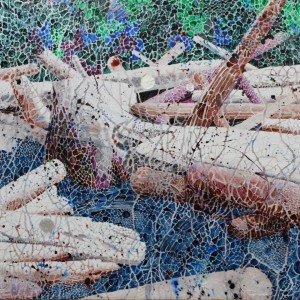
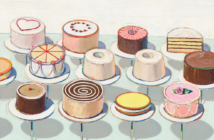
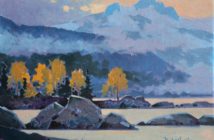

15 Comments
So much of Didion’s creative insights that are applicable to making visual art–especially the compulsion/necessity to make art on your own. Thanks for this, Sara!
Thank you. Yes, I was thinking the same, before I read your comment. Great post x
Oh my, just yesterday, I hadn’t heard. I am sure a lot of us (all) can relate to her methods. I know I can. She has always intrigued me, RIP. Thank you for this Sara.
I love how much you teach me! Xoxox…Joan
Joan’s words and Helen’s paintings pair perfectly together.
Joan’s description of how she starts a book and wants it to be the world, then hates it and wants to destroy it and then decides to finish it because she hopes that she will get it right the next time, reminds me so much of how I feel about a lot of my paintings. So sorry to hear about her death. Thanks for this, Sara.
Thanks Sara. Helen is one of my favourite artists. Her works seem to express Didion’s style of writing – spare!
Merry Christmas everyone and stay safe.
Wow, such a full creative, and successful, life while battling the struggles of MS and Parkinson’s. Living to 87 as well. I bet most of us, if not all, who choose to follow our drive to make art can relate to Joan. Best of the holidays to you and the family, Sara.
I love her comment…..sometimes you have to go with what you’ve got! That is exactly where I am at with a painting that I am doing and I’m not particularly happy with it.
Thank you Sara for your dedication in keeping Painters Keys alive and full of wisdom and inspiration from both you and your Dad. Best wishes to you, your family and all of us struggling artists for a very Merry Christmas and a safe, happy and healthy New Year.
My favourite lines of Joan Didion’s, from an early essay she wrote for Vogue on self respect: “However long we postpone it, we eventually lie down in that notorious uncomfortable bed, the one we make for ourselves. Whether or not we sleep depends, of course, on whether or not we respect ourselves.” Sleep well Joan
So sorry to hear of her passing. The Year of Magical Thinking helped me when grieving the death of my 18 year old son.
Thanks again Sara. You are a freaking legend. Merry Christmas to all.
I haven’t read any of Didion except The Year of Magical Thinking.. Now eighteen years after my husband’s sudden death I still find her insights coming to mind in helping others with their loss. Thank you Joan.
Sara, Happy Holidays to you and your family. I am so sorry to learn of Joan’s passing. I have long read your postings and her books and even re-read her books as they are fresh to me every time I read them. I loved her last documentary. I loved your matching Helen’s work to Joan’s. We are all in this together in our own different way. Your article was a magnificent dedication to her and your spirit and love of all art equals each of these ladies.
Thank you for this reflection on Joan, her creative writing and simple focused practice. May she rest in peace.
An interesting point you mentioned about “muscle memory” while retyping before creating a new page made me think of the learned rhythms and rituals we may include in our lives to bring about something good that we wish to share with others. Great letter!
Merry Christmas and the best of the holiday season to you and yours.